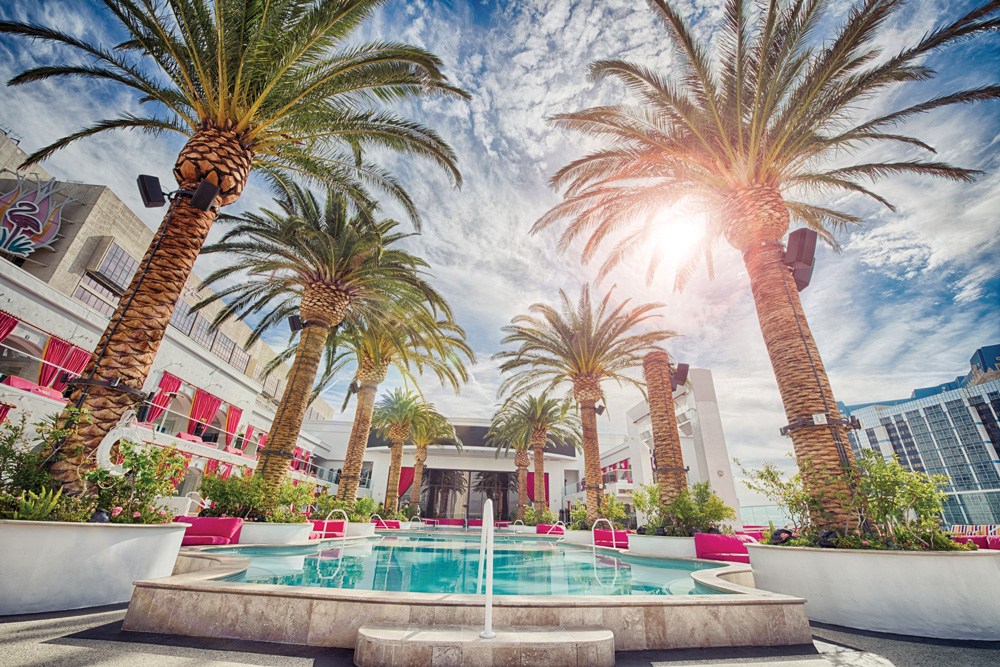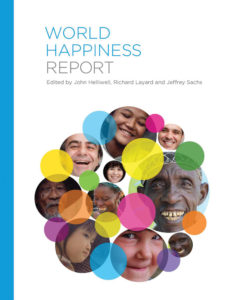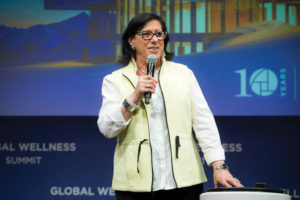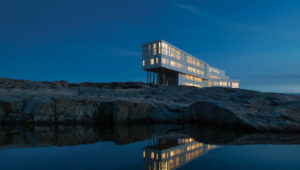
2017 Global Wellness Trends
Beyond the Elite “Ghettos” of Wellness
In a world where rising inequality and a sense of “unfairness” is leading to a global, populist backlash – a wellness industry that’s become narrowly associated with wealthy elites (…the $300 yoga pants and treatments) must, and will, change
One of the most insistent arguments, resounding through most sessions at the 2016 Summit, was the need for “wellness” to reach further beyond the rich elites. Leading economists painted the new (sudden) global picture: a world where a rising sense of “unfairness” is unleashing a global storm of populism. Economist Thierry Malleret’s keynote (Founder, The Monthly Barometer) explored a crucial paradox: in a world where “global economic abundance” has never been higher, why is not only global unwellness (obesity, mental illness, etc.) rising–but why is a wave of populist conservatism underway (i.e, Brexit, Trump, strongmen from Russia to Turkey to the Philippines)? Malleret postulated that it’s not as simple as how well nations or individuals are doing economically (a simple matter of “richer” or “poorer”), but the fact that humans are hardwired down to their DNA for “fairness.” And a rising, global sense of “unfairness” is unleashing a whole lot of unhappiness.
Economist Jan-Emmanuel De Neve (professor, Oxford University) dove into the UN’s latest World Happiness Report (he is co-editor) to explain all the factors beyond GDP/income that are major indicators of human wellbeing (from social connections to health to social freedom), and how the latest report shows that people’s perceptions of “inequality of wellbeing” has grown in almost every country over the last few years. So, not only does the world need far more wellness (given skyrocketing chronic disease and mental illness rates), people’s heightened sense of “unfairness” in total “wellbeing” is poised to wreak havoc on the world stage.
Andreas Braun, PhD (CEO, Destinations Wattens, Austria), whose talk “Beyond Ghettos of Wellness” inspired this trend’s name, examined rising inequalities that have created a wellness industry too associated with the 1%. He mused on his own low-cost, daily health regime (a walk in Lans, Austria) that takes him past a “…a luxurious destination where the ‘burned out’ winners of our society vacation”, and where, on the other hand, you have a nearby fitness/recreation center for (regular) people paid for the social system. Braun’s sharp philosophical insights about such glaring “wellness disconnects” challenged the industry to expand the ways in which they could create more inclusive “economies of social good”–or face a perceptual backlash.
Certainly no economist argued that the wellness industry (the vast majority of which are small businesses) was responsible for overwhelming facts like only 3% of the world population having both an education and regular work, or that the richest 65 people own half of the world’s wealth. And the ways that the wellness industry works to be more inclusive was certainly on display: from more spas getting trained to help people with cancer (See Trend) to the student “Shark Tank of Wellness” winner, a young Bangladeshi woman whose concept is to make sustainable sanitary napkins available to 80% of women in her impoverished nation, by using leftover materials from the country’s cotton industry. The collective point: governments AND wellness businesses need to bring more healthy services to more people. And the new realities (and perception) about “unfairness” make this both a moral and a market mandate. Because “wellness” businesses that only deliver $300 athleisure leggings or massages will seem increasingly inauthentic – part of the problem, not working towards the solution, which must be…more wellness for all.
The Past: Rising income inequalities, and a new culture where wellness is the “ultimate aspiration”, have led to a wellness industry perceived as too narrowly associated with wealthy elites.
The Future: A heightened perception of “unfairness” in access to wellness makes industry change both a moral and market mandate. And changes will include more wellness businesses giving back and “doing something” to bring more services to more people-wellness tourism development that thinks beyond the property, to the whole community–and more wellness for the workers that actually deliver it.
THE TREND

shows that people’s perceptions of
“inequality of wellbeing” has grown
in almost every country over the
last few years. Image Source: World
Happineess Report
What are “ghettos of wellness”? You know them… people flying to that dreamy tropical island for a stay at a dreamy, 5-star wellness retreat and driving past slums as they enter the gates–or wondering if that amazing local practitioner is actually being paid just a few dollars while the resort is charging you over $200 for a 90-minute massage. All the things you can now purchase in the name of “wellness” in our everricher (gentrified) global cities-but against the backdrop of ever-sharpening income inequalities beyond that city…and worldwide.
The media has two distinct voices when it reports on wellness. One is the avalanche of stories and blogs on the latest trends that the “beautiful, young elites” are adopting. The second is a rising, smart mini-industry of “wellness bashing”. That media argument: the pursuit of “wellness” is intrinsically a culture of narcissism, an inwardturned obsession with “self-optimization” at the expense of real socio-economic change. An example of the latter, through a filter of wit and wisdom, is Ruth Whippman’s recent book, The Pursuit of Happiness: Why Are We Driving Ourselves Crazy and How Can We Stop?.
While reducing “wellness” to its richest (sometimes grotesque) varietals is increasingly understandable–it’s, of course, not quite accurate. It’s the growth of the global middle class that’s most fueling growth for the vast $3.7 trillion wellness market (according to the Global Wellness Institute’s new research on the seemingly unstoppable expansion for the healthy food, beauty, fitness, alternative medicine, spa, etc., markets). And a peek into any public gym or YMCA will reveal the packed yoga and Zumba classes. And throwing out the wellness and prevention concept with the elitist “bathwater” is a terrible idea, with stats like the number of obese/overweight people more than doubling since 1980 (to almost 2 billion adults, WHO data) and preventable diseases like heart disease and diabetes now the world’s top killers.
But with income inequality only looking to increase worldwide – and with the latest UN World Happiness Report showing a disturbing increase in the last few years in people’s perceptions that there is now more “inequality of wellbeing”–you can feel the criticism of a wellness industry overly-preoccupied with serving rich elites start to ratchet up. We live in an age of socio-economic wake-up calls, with new, worldshocking evidence of what perceived gaps between the “happy” and the “unhappy,” the “elites” and those who revile them, can actually do.
Summit experts discussed several key ways that the wellness industry must-and will– change in this new world:
• More giving back and “doing something” to bring more wellness services to more people. And if many wellness businesses already have charitable initiatives, the future is a “giving back” and community-building model baked deep into the business model.
• A new “Wellness Tourism 2.0”, where “wellness” is not merely the province of elites behind the resort’s gated walls. The future is a shift from a property focus to developing and promoting towns, regions, and even nations, where more authentic, comprehensive wellness is “packaged”: from positive environmental policies to access to sustainable, healthy food to broader social justice–benefiting tourists and locals.
• A proliferation of lower-cost wellness products and services: from a new spate of affordable healthy grocery stores to low-cost spa chains. But at the same time, a new focus on the wellbeing of the employees/practitioners that actually deliver all this “wellness.” So, lower prices, but a conversation about “fair price” and the state of wellness labor.
WELLNESS BUSINESSES GIVING BACK MORE:
The future is every profitable wellness business giving more to communities, charities and those in need, and bringing more wellness services to people that can’t afford them. As Dr. Gerry Bodeker (Professor, Columbia & Oxford Universities) said at the Summit, it can be as simple as spas figuring how many hours a week their therapists just sit there, and sending them out to eldercare facilities or women’s shelters. Everyone, from massage therapists to yoga, meditation and fitness teachers, needs to take what they do OUT side of their narrow pasture.
For instance, the “Beauty Becomes You Foundation” sends spa and salon therapists (who donate their time) out into the senior community to deliver desperately needed touch and aesthetic services. The non-profit “Yoga Gives Back” has organized so that the yoga community gives back to the poorest mothers and children in yoga’s home, India, whether through micro-loans or sending destitute children to school. Miraval’s (Tucson, Arizona) “Give Back” program allows people to nominate someone going through hard times (and that needs wellness support but lacks the financial resources) to stay for free. And if “wellness culture” has been derided as essentially a-political, Deborah Szekely’s (the 94-year-old founder of Mexico’s Rancho La Puerta and the Golden Door) new PolicyWell.com refutes that charge: this new activist resource rates how each of the 535 members of the U.S. House and Senate vote around bills that affect the health of ALL Americans (whether food justice, public health, unregulated toxins or natural resources).
Renowned futurist, Edie Weiner (CEO, The Future Hunters), argued at the Summit that more companies in the future will not only be “green”, they will be “blue”, meaning they will actually give back (to the environment, the community, etc.) more than they take. And the future of wellness businesses is giving not only as an add-on, but as foundational to their very model. For instance, The Golden Door (California) gives every dime of net profits to charity, especially those with a women’s focus. Le Monastère des Augustins (Quebec), a wellness hotel set in a 17th-century monastery and hospital, gives all profits to the care of patients and for complimentary hotel-spa stays for their caregivers. And the magnificent Fogo Island (off Newfoundland, Canada) proudly defies the “remote island property as wellness ghetto” stereotype: it was designed from the ground up (through its Shorefast Foundation) to restore the economic fortunes of the people there (one of Canada’s oldest rural cultures), and every Canadian dollar goes back into that local community.

WELLNESS TOURISM 2.0:
“Holistically Well” Destinations (Not Just Properties)
Wellness travel development and promotion heretofore has been all about the property: that destination spa or yoga retreat and what transpires within their “walls.” Which, of course, can sometimes lead to “ghettos of wellness”, a lot of health and happiness inside, and jarringly little without. At the Wellness Tourism Roundtable, Dr. Franz Linser (CEO, Linser Hospitality) argued that in the future the wellness tourism focus will shift beyond properties to destinations (whether a town, region or a country) where more authentic, complete “wellness” can be developed and experienced (clean air, protected nature, access to healthy food/green markets, safer societies because of happier people). This is the sustainable, responsible model where tourism and social/community development are in synch–and these destinations will increasingly be the wellness tourism winners of the future.
Dr. Gerry Bodeker discussed this new paradigm of “well” economic and tourism development (in a video interview) with Jigme Thinley, Bhutan’s recent prime Minister (2008-2013). Bhutan is famed for first establishing a “Gross National Happiness Index,” and Mr. Thinley explained how Bhutan’s government and development policies all revolved around creating more “individual happiness” for the people of Bhutan (their mental, physical, spiritual and environmental wellbeing).
And how that has meant firmly rejecting unchecked development (whether in mining or wellness tourism) in favor of an incremental model (protecting nature as their #1 resource, limiting tourism entries, etc.). The appeal of Bhutan as a wellness destination is, then, truly holistic (from protecting its pristine nature and ancient Buddhist culture to working to create “the happiest people on earth” to mindfully developing wellness/hotel destinations. For instance, Six Senses will open a fascinating, 5-property concept there in 2017, a “circuit” where you journey from one ecoresponsible, small destination to the next-each based around one of the five pillars of Bhutan’s “national happiness” vision (from spiritual to physical health).
Interestingly, in the 2016 World Happiness Report, Bhutan ranked #1 as the most equal country when it came to its population’s wellbeing, and it’s this kind of holistic social and environmental “wellness” that will increasingly define the authentic, most desirable wellness destinations of the future. No one has ever mapped the countries that score highest for overall (or most “equal”) happiness and wellbeing against tourism/wellness tourism growth…but it would be an interesting project. (And note, the Scandinavian countries like Denmark, Iceland, Norway and Finland dominate for overall happiness, as well as least “inequality in wellbeing”). But the point is that increasingly, it’s not just amazing wellness properties, but the wider destination’s “overall wellness” that casts the positive halo for world travelers. Whether it’s Norway’s silent, gorgeous forests and their recently becoming the first country to ban all deforestation–or Costa Rica now running on 100% renewable energy. And the Costa Rica Tourism Board recently announced that its 2017 campaign will promote that holistic “Pura Vida” wellness lifestyle: from its nation’s sustainability values to its incredible wellness properties.
Iceland’s runaway tourism growth (a whopping 264% in the last five years), has to do with things like their volcano eruption in 2010 and new, cheap air layovers, but also their protection of their natural beauty, and that ineffable vibe that comes from being one of the happiest nations, as well as their incredible geothermal lagoons, like its #1 tourist destination, the hot springs development, Blue Lagoon.
So, wellness development will increasingly be a public-private collaboration, with an eye to both the wellness of the local community and tourists. Like the ambitious Llanelli Wellness and Life Science Village under development in socially forward-thinking Wales, which combines life science research facilities, an education center to deliver health/wellbeing training, a neuro-village with living facilities for the cognitively impaired, a tourism-focused wellness hotel, spa and wellbeing center, and even a wellness primary school.

WELLNESS FOR WORKERS WHO DELIVER IT – AND THE “PRICE” OF SERVICES ISSUE
The elite ghettos of wellness will be broken down by a coming wave of wellness products and services at lower price-points: from the new, affordable healthy supermarkets and fast-food concepts to affordable spa chain brands and wellness hotels. We have mainstream, affordable hotel brands like EVEN (6 in the U.S., more in the pipeline) that are 100%-wellness focused (from healthy food to in-room fitness zones). Affordable healthy grocery stores are especially booming in the U.S., like Whole Food’s new “365” brand (three on the West Coast and more coming in 2017), or Sprouts Farmers Markets (200 locations) or Fresh Thyme Farmers Markets (the Midwest). New healthy “fast-food” chains are exploding, like Leon (across London) or Sweetgreen or LYFE Kitchen in the U.S. And the social justice models are creative: for instance, the new, healthy chain, Everytable (Los Angeles), will have different prices based on the median income of residents in that neighborhood. And of course the low-priced spa chains, like Massage Envy (1,100 U.S locations, now on march internationally, with openings in Australia), have put massage and facials in the reach of the “other 99%.”
It’s an extraordinarily positive development that more people are aware of food justice issues: they care about cruelty-free farming and responsibly, sustainably produced, organic food. And they’re willing to pay more for it. But there is an odd lack of awareness about “human justice” issues when it comes to the people that deliver all of these wellness experiences: whether massage therapists or fitness instructors–making the issue of wellness prices an increasingly complex one. $40 massages and cheap fitness classes are hailed as a “democraticization” of access to wellness (which they are), but with little moral awareness of the cost of the human labor/expertise that goes into that experience.

under development in South Wales – where
an ambitious new wellness community is
being designed for the region/locals as well as
tourists. Image Source: Llanelli Wellness and
Life Science Village
And this increasingly complex issue of a backlash against incredibly pricey wellness services and a lack of wellness for too many who work delivering it was a topic at the Summit’s panel of heavy hitting wellness media. One top editor (at a major UK daily) discussed how she (and other writers) simply will not cover “ridiculously-priced” treatments on principle. Another discussed how few “star” spa therapists are in the media: while we have celeb fitness/wellness gurus that garner endless ink, there seems to be a problem in the press with “naming” the equivalent spa therapist stars–disempowering them. (The panel agreed that in addition to low-cost wellness, the wellness of employees working in wellness needs to be a necessary future trend. Having a therapist do 14 treatments in a row is a real, not sustainable, problem. And consumers need to be educated about labor costs, realize that “cheap” is often not fair, and that businesses that want to attract and retain the best practitioners (their most serious business problem) will need to put a much stronger focus on their employees’ own wellbeing.
THE FUTURE
Income and wellbeing inequalities only look to widen, with so many big economic forces at work: from more people worldwide working in the new wage-stagnating “gig economy” or new “sharing economies”, which economist Thierry Malleret called a “sharing the scraps” economy. Artificial intelligence and robotics are pushing people out of jobs. And globally there are not yet effective plans to deal with ever more severe inequality. As Nobel economist Bob Shiller argued, today’s economic inequality becomes tomorrow’s social and political catastrophe (by giving rise to an explosion in populism). A reality we keep watching unfold. And of course more income inequality means more inequality in the wellness space: people’s access to healthy food, fitness, and all kinds of wellness services–when the “have less” need it more than ever.
We seem at a potential perceptual tipping-point, where the “elite ghettos” of wellness seem more unacceptable, unless these businesses give more back and work to bring what they do to more people lower down the socioeconomic ladder. It’s really about authenticity in intention…a getting real about what true wellness is and should be. And the wellness businesses of the future that will be truly sustainable (and that people will increasingly feel good about) will adopt new models: whether wellness tourism development that thinks beyond the property, to the whole community to lower, but fair, prices for wellness products and services to more wellness for the workers in wellness.

Copyright © 2016-2017 by Global Wellness Summit.
If you cite ideas and information in this report please credit “2017 Wellness Trends, from the Global Wellness Summit.”
For more information, email [email protected].
